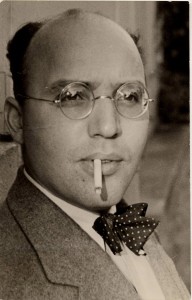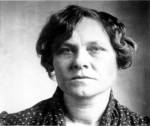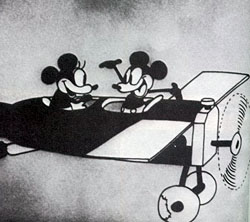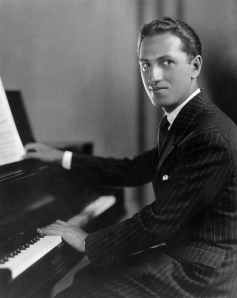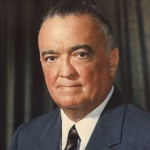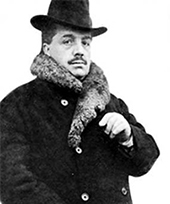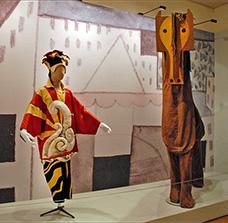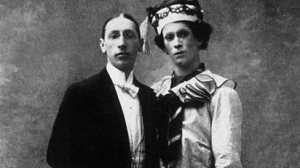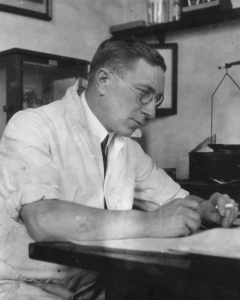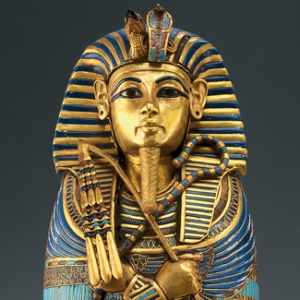The musical The Threepenny Opera opened at the Theatre am Schiffbauerdamm in Berlin on 31st August, 1928. It was adapted from an 18th-century English ballad opera, John Gay’s The Beggar’s Opera, and offers a Socialist critique of the capitalist world.
Weill set the music to words by German dramatist Bertolt Brecht, with set designs by Caspar Neher who had collaborated with Brecht on many works before and since. Despite an initially poor reception, it became a great success, and played 400 times in the following two years. The performance was a springboard for one of the best known interpreters of Brecht and Weill’s work, Lotte Lenya, who was married to Weill.
Songs from The Threepenny Opera have been widely covered and become standards, most notably “Die Moritat von Mackie Messer” (“The Ballad of Mack the Knife“) which was introduced to the US hit parade by Louis Armstrong in 1956, but is most closely associated with Bobby Darin, who recorded his version in1958. In 1959 Darin’s version reached number one on the Billboard Hot 100 and earned him a Grammy Award for Record of the Year. Ella Fitzgerald made a famous live recording in 1960 and other notable versions include performances by Jimmie Dale Gilmore, Tony Bennett, Marianne Faithfull, Nick Cave, Brian Setzer, Kevin Spacey, Westlife, Robbie Williams and Michael Bublé.
1928…
“I should like to let you know how important sliced bread is to the morale and saneness of a household…”
– From a letter in the New York Times
On 6 January 1928 the River Thames flooded in what is considered the most disastrous flood in London’s history. Fourteen people were drowned and thousands were made homeless when flood waters poured over the top of the Thames Embankment and part of the Chelsea Embankment collapsed. Westminster Hall and the House of Commons were flooded, as were the London Underground stations and lines along the riverside. The moat at the Tower of London, which had been empty more than 80 years, was refilled by the river. It was the last major flood to affect central London.
On 12 January 1928, convicted American murderer Ruth Snyder was executed at Sing Sing prison. Her execution, for the murder of her husband, Albert, was captured in a well-known photograph which is now part of the collection of the Smithsonian National Museum of American History.
The final section of the Oxford English Dictionary was completed in April 1928 and the full dictionary was republished in ten bound volumes. Today, with descriptions for approximately 750,000 words, the Oxford English Dictionary is the world’s most comprehensive single-language print dictionary according to the Guinness Book of World Records.
On 3 July 1928, John Logie Baird demonstrated the world’s first colour television transmission. Baird was a Scottish engineer who is often referred to as “The father of television.” In 2002, Baird was ranked number 44 in the BBC’s list of the “100 Greatest Britons” following a UK-wide vote. In 2006, Logie Baird was also named as one of the 10 greatest Scottish scientists in history, having been listed in the National Library of Scotland’s ‘Scottish Science Hall of Fame’.
Also in 1928…
Sliced bread was first sold in 1928, advertised as “the greatest forward step in the baking industry since bread was wrapped”. This led to the popular phrase, “the greatest thing since sliced bread”. Otto Frederick Rohwedder of Davenport, Iowa, USA invented the first loaf-at-a-time bread-slicing machine. A prototype he built in 1912 was destroyed in a fire and it was not until 1928 that Rohwedder had a fully working machine ready.
The silent, animated short Plane Crazy was released on 15 May 1928, featuring the first appearance of Mickey and Minnie Mouse. Later that year, Disney released Mickey’s first sound cartoon Steamboat Willie with Plane Crazy re-released as a sound cartoon in 1929. Mickey’s voice was provided by Walt Disney himself in these original cartoons.
Born in 1928
English Hairdresser Vidal Sassoon, Prime Minister of Israel Ariel Sharon, film director Stanley Kubrick, artist Andy Warhol, composer Burt Bacharach, actors Shirley Temple and George Peppard, entertainers Bruce Forsyth and Bob Monkhouse and anthropologist Desmond Morris were all born in 1928.
Check out our Pinterest board for The Roaring 20s, for more images and video clips.
